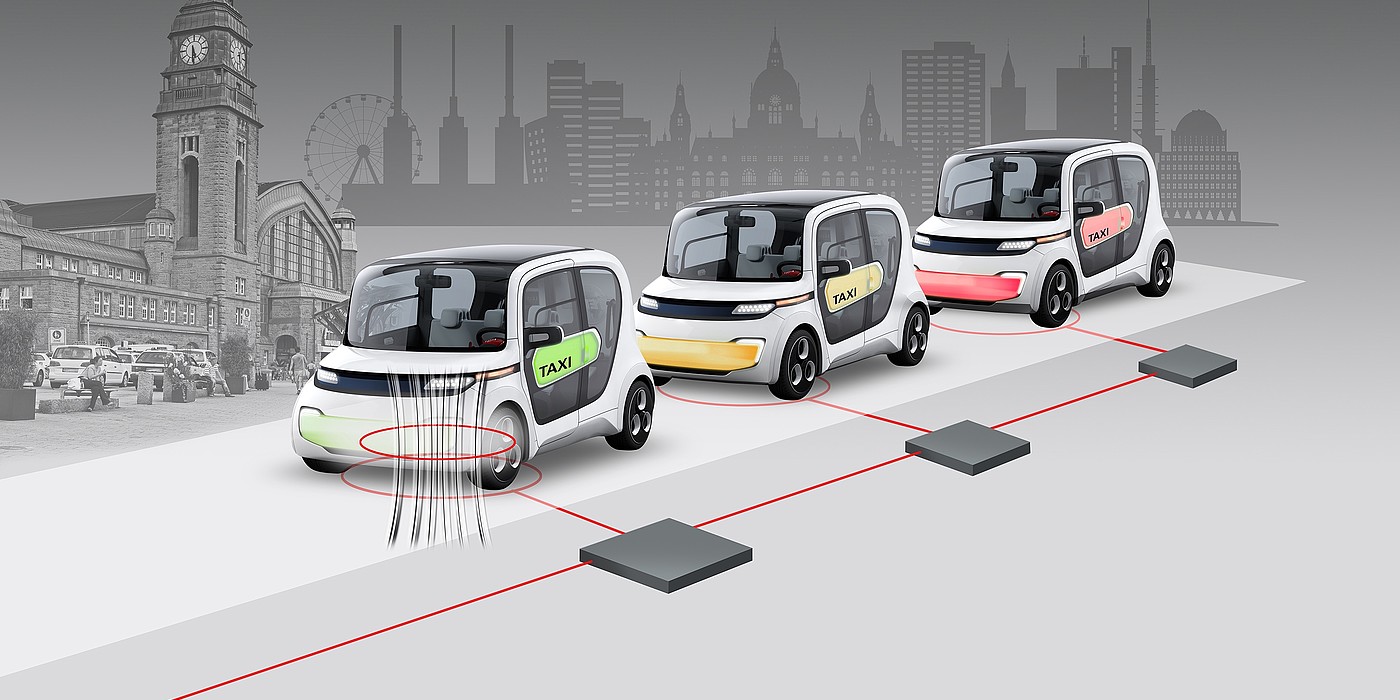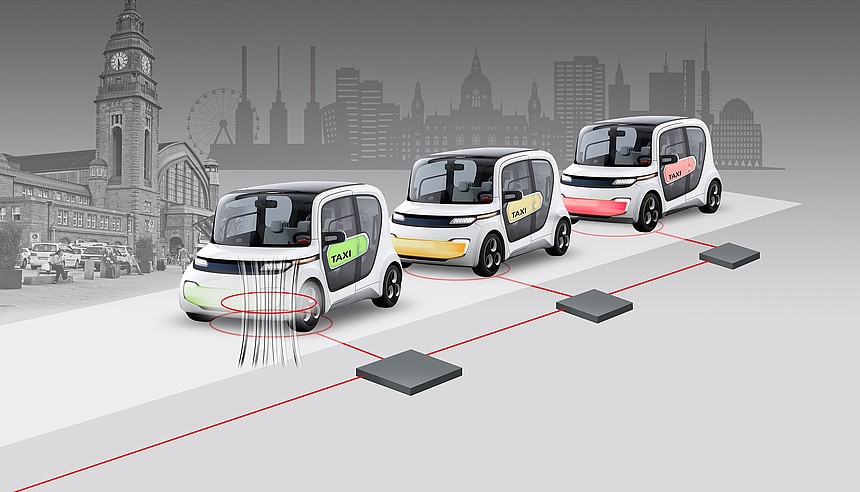The quality of the charging infrastructure will be a decisive factor in the success of eMobility. EDAG, the world's largest independent engineering company, has, in cooperation with the University of Hanover (HsH), started a research project dealing with the inductive charging of electric-powered taxes. The aim: to use the time a taxi is standing waiting for fares as charging time. This approach will allow for smaller battery capacities and eliminate the need for charging stations and charge leads.
In addition to the EDAG Group and the University of Hanover (HsH), further project partners are SUMIDA Components & Modules GmbH and the Technical University of Braunschweig. In this 4-year research project, the EDAG Group is assuming responsibility for the development of specific power electronics which will transfer the signals from the SUMIDA charging coils on the side of the road. The EDAG Engineering experts will also be integrating the SUMIDA receiver coils into two vehicles as prototypes. The Technical University of Braunschweig is researching how to integrate the coils into the road surface on the test field at the HsH, where a suitable load positioning assistant is being created. The HsH is developing two supplementary function modules for power electronics: a charge control and a communication module.
The knowledge gained in the test field will eventually be used to build a taxi stand with inductive charging coils outside the train station in Hanover, where the system will be demonstrated in everyday operation in cooperation with the local taxi firm Hallo Taxi 3811.
The LaneCharge project is being funded by the Federal Ministry of Transport and Digital Infrastructure (BMVI) within the scope of the BMVI's € 3.7 million Electromobility Funding Directive.

